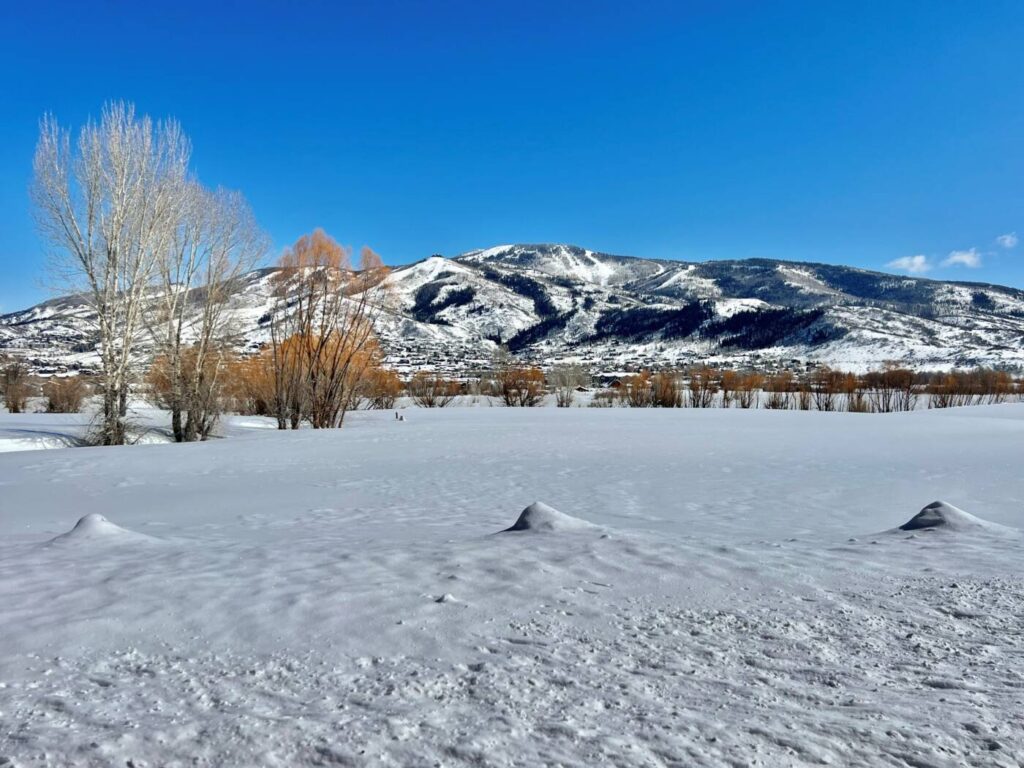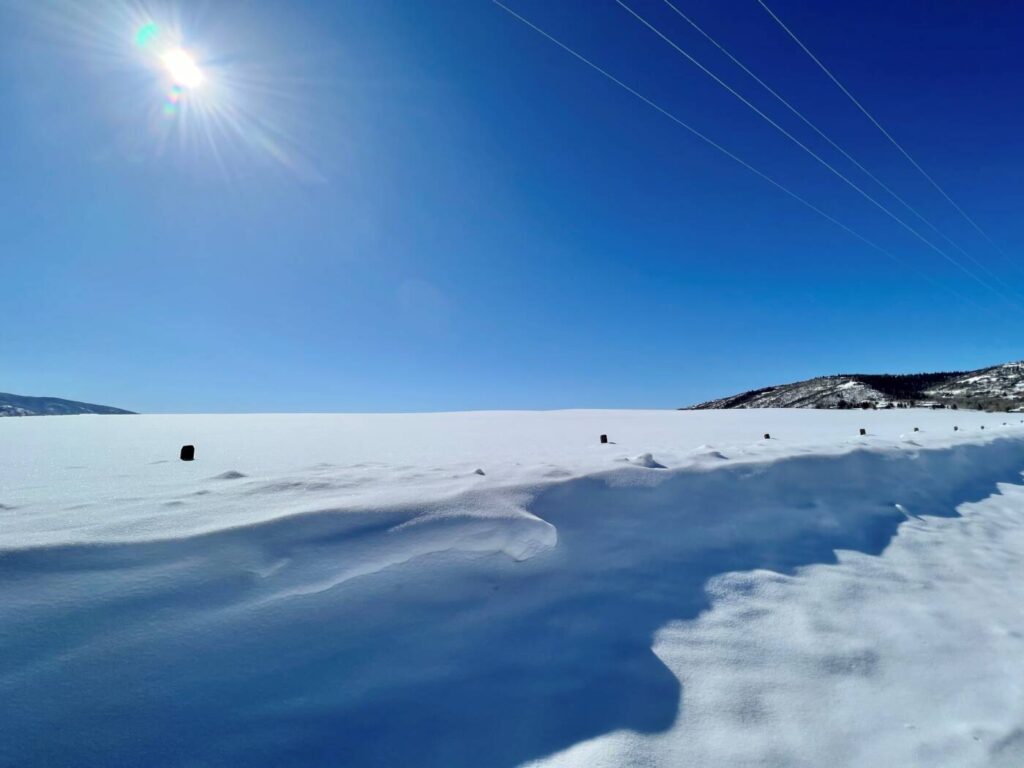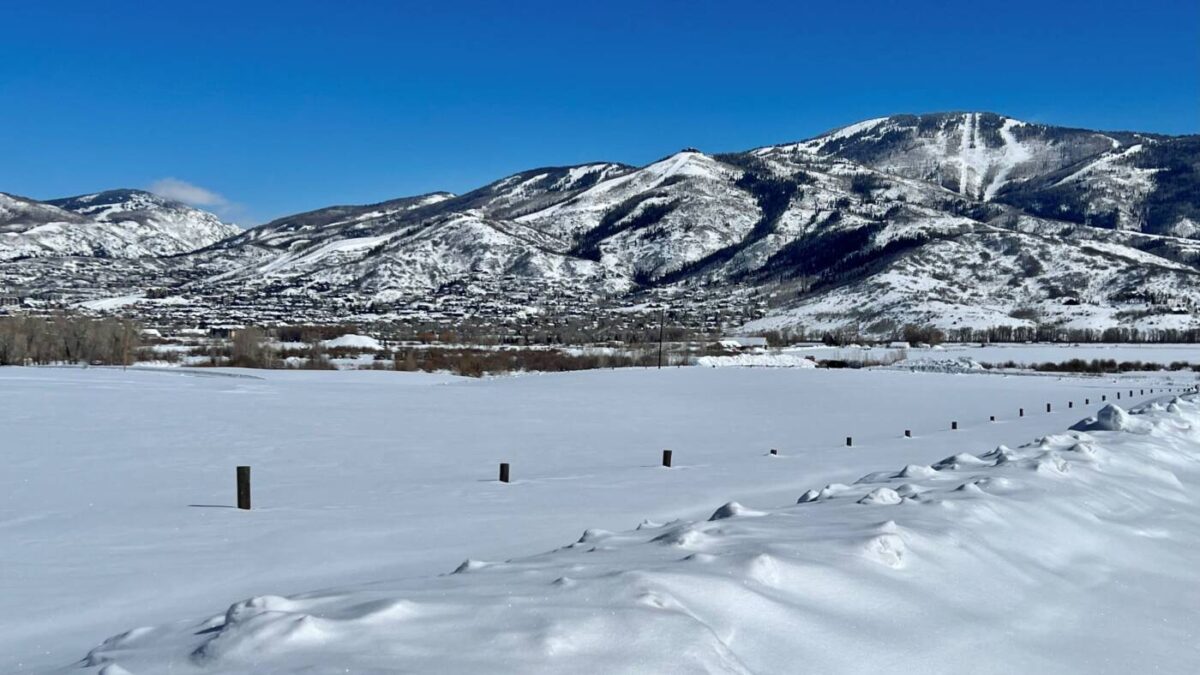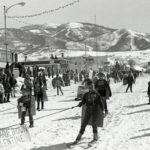Three and Four Wire Winters
When it comes to measuring snowfall, Steamboat’s agricultural ranches use an imprecise yet valuable method to keep track of Mother Nature’s winter bounty. Wires on a fence are helpful indicators to ranchers as to how much snow has piled up and what it means for the spring and summer seasons ahead. While Steamboat Resort measures snowfall precisely on staked platforms, Steamboat’s ranchers measure snowfall based on the height of their barbed wire fences.
It is unclear when the terms “three wire” or “four wire” winter were officially coined, but most ranchers today have been using the terms their whole lives. For Jim Stanko, the third-generation owner of Stanko Ranch, he recalls using the terms as a young child growing up in the 1950’s. “Ranching families used the term three wire winter,” he explains, “but not so much the town people. They were more interested in the snow piled up on the roads from the snowplows,” said Stanko. Also, according to Stanko, “ranchers don’t take the time to measure snow with stakes, so instead, they compare snowfall amounts to their barbed wire fences.”

As for what a three wire winter versus a four wire winter means, the interpretation of the term varies from ranch to ranch. Long-time rancher Marsha Daughenbaugh noted the difference depends mostly on the cattle operation that the ranch is running. At her ranch, the Rocking C Bar Ranch, they only use three wires on their fences, which means the top wire is about three feet high. Because they do not keep yearling cattle, which tend to be more rambunctious and curious, they do not need a fourth wire on their fencing to keep those cattle in. Daughenbaugh also explained that having only three wires helps the deer and elk herds migrate in heavy snowfall, which some ranches need to consider more than others depending on migratory paths.
By law in the state of Colorado, all agricultural fences must have at least three wires. Stanko uses four wires to secure his ranch, and that fourth wire usually measures about four feet in height. Since 1907, the 640-acre Stanko ranch has been in operation, so these long-time ranchers are well versed in knowing exactly what a three wire versus a four wire winter means. When snow hits that third wire, that means it is a normal winter and there will be plenty of snow for spring moisture. But when snow hits that fourth wire, Stanko gets concerned that winter might be longer than they had wanted.
As with most things in life, there are pros and cons. When it comes to a three wire or more winter, ranchers look forward to the bountiful spring moisture to fill their irrigation ditches. They know that the chances are much better for a healthier season and healthier grasses growing on the valley floor. However, more snowfall stacked up on their fence wires also means more wintertime snow removal and more fence repair in the spring. As the snow melts, it becomes heavy and pulls the barbed wire fences to a point of needing repair. While the irrigation ditches may be filled and the grasses may be growing brilliantly green, ranchers will be hard at work repairing stretched fence wires from a three or four wire winter.

And as for this season, Daughenbaugh reports a solid three wire winter plus as the snow has completely covered the wires and even the fence posts in most places at the Rocking C Bar Ranch. At the Stanko Ranch, it is about the same depth as the third wire is completely covered and the snow accumulation is approaching the fourth wire. As of February 20, Steamboat Resort has officially reported 340 inches so far this season. While Steamboat Resort is reporting an eight-and-a-half-foot base at the summit and a six-foot base at mid-mountain, Steamboat’s beloved ranchers are unofficially reporting a three-and-a-half wire winter so far. With a snowy week ahead, Steamboat Resort will likely hit that 350-inch mark for the season and Steamboat’s ranchers may soon be reporting a four wire winter in Steamboat Springs.





